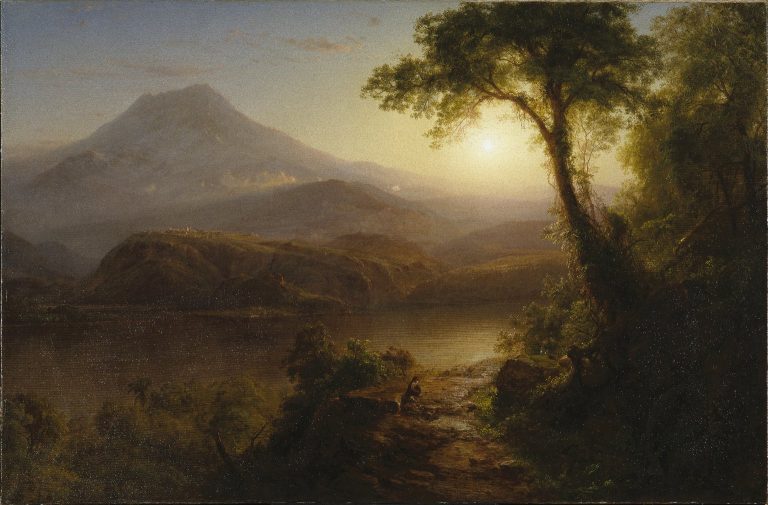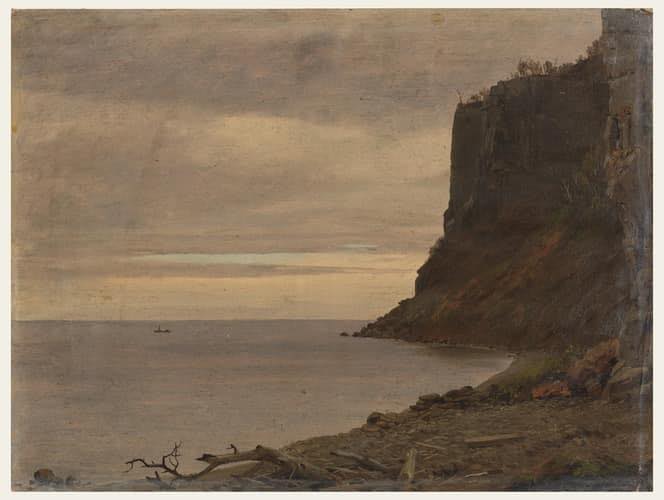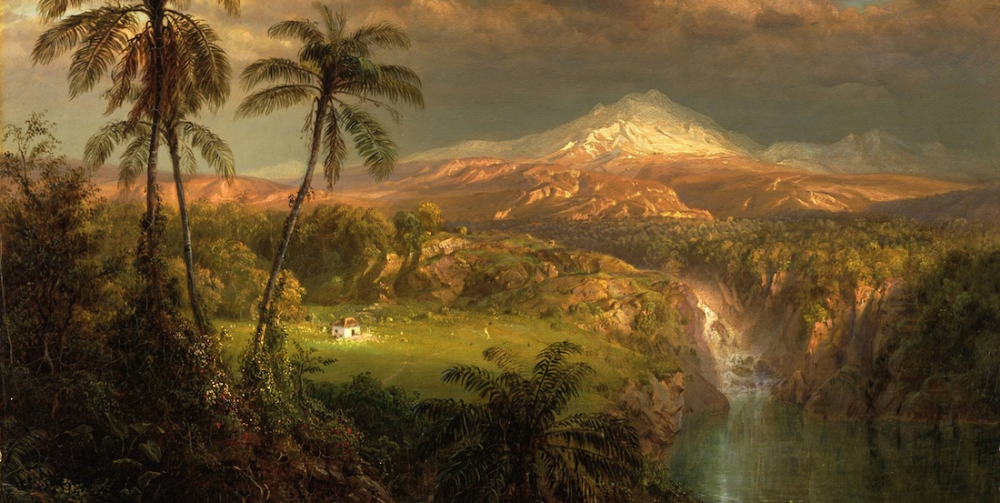
Capturing Nature’s Grandeur in American and Andean Landscapes
New York, N.Y. — Frederic Edwin Church, a luminary of the Hudson River School, transformed the American art scene with his breathtaking landscapes that celebrated the untamed beauty of nature.
Born in 1826 in Hartford, Connecticut, Church’s work epitomized the movement’s reverence for the natural world, blending meticulous detail with romantic idealism. His travels to South America in the 1850s, inspired by the writings of Alexander von Humboldt, expanded his canvas to include dramatic Andean vistas, cementing his legacy as a painter who captured the earth’s majesty with both scientific precision and emotional depth.

Early Mastery of North American Landscapes
Church’s early works, such as Coast of Grand Manan Island, Canada (1851), housed at the Smithsonian’s Cooper Hewitt, demonstrate his ability to capture the rugged beauty of North America.
His paintings of the Hudson Valley, Niagara Falls, and the Catskill Mountains resonated with a growing American audience eager to embrace their nation’s natural splendor.
The Hudson River School, a mid-19th-century art movement, emphasized the sublime power of nature, and Church’s large-scale canvases, often filled with vibrant light and intricate detail, became its hallmark.
His ability to render atmospheric effects, such as the interplay of light and shadow, distinguished him as a master of his craft.
Church’s early paintings were not merely aesthetic;
they reflected a cultural moment when Americans
sought to define their identity through the land.
His works, displayed in galleries like the Brooklyn Museum, invited viewers to marvel at the untouched wilderness, fostering a sense of national pride. By the 1850s, Church’s reputation as a leading landscape painter was firmly established, with exhibitions in New York drawing crowds eager to witness his vision of nature’s grandeur.
South American Sojourns and Humboldt’s Influence
In 1853 and 1857, Church ventured to South America, inspired by Alexander von Humboldt, a German scientist whose 1849 travel accounts urged artists to depict the continent’s pristine landscapes. Humboldt’s call to study the earth in its “most original state” resonated with Church, who sought to capture the Andes with scientific accuracy. Paintings like The Andes of Ecuador (1855) showcase his ability to blend empirical observation with romantic awe, depicting towering peaks and lush valleys with meticulous detail.
Church’s South American works, such as Tropical Scenery (1873), housed at the Brooklyn Museum, reveal a shift in his approach. This oil on canvas employs soft outlines and suffused golden light to evoke a nostalgic, almost dreamlike quality. Unlike his earlier, more analytical depictions, Tropical Scenery prioritizes mood over precision, reflecting perhaps the mellowing of age or the veil of memory. The painting’s large frame underscores its monumental presence, a testament to Church’s ability to command attention.
Evolution of Style and Vision
As Church aged, his work evolved from the scientific rigor of his youth to a more contemplative style. His later paintings, including Tropical Scenery, embraced quieter, more generalized views of nature. The Ecuadorian landscape in this work, bathed in warm, golden hues, contrasts with the dramatic intensity of his earlier Andean scenes. This shift may reflect Church’s personal growth or a response to changing artistic tastes, as the Hudson River School began to wane in popularity by the 1870s.
Church’s ability to adapt while maintaining his reverence for nature set him apart from his peers. His use of light, particularly in Tropical Scenery, creates a serene, almost spiritual atmosphere, inviting viewers to reflect on the timeless beauty of the natural world. This evolution underscores his versatility, as he balanced the Hudson River School’s romantic ideals with a growing interest in emotional resonance.

Legacy and Lasting Impact
Church’s contributions to American art extend beyond his canvases. His works, exhibited in shows like New York: A Magnet for Artists and American Art at the Brooklyn Museum, continue to inspire awe. Tropical Scenery, acquired through the Dick S. Ramsay Fund, remains a highlight of the museum’s American Art collection, a testament to Church’s enduring influence. His ability to capture the sublime—whether in the Hudson Valley or the Andes—helped shape America’s artistic identity, bridging scientific inquiry with romantic expression.
Today, Church’s paintings invite viewers to reconsider humanity’s relationship with nature. His work, free of copyright restrictions, is accessible to new generations through institutions like the Brooklyn Museum and the Smithsonian. As environmental concerns grow, Church’s celebration of the earth’s beauty serves as a poignant reminder of the landscapes we must preserve.
Frederic Edwin Church, Master of Hudson River School (June 26, 2020)
75-Word Summary
Frederic Edwin Church, a leading figure of the Hudson River School, painted stunning North American and Andean landscapes. Inspired by Alexander von Humboldt’s travel accounts, his 1873 work, Tropical Scenery, reflects a nostalgic shift from scientific precision to serene, generalized views. Exhibited at the Brooklyn Museum, Church’s oil on canvas masterpiece showcases his ability to evoke nature’s grandeur, blending romanticism with detailed observation in a career that redefined American art.